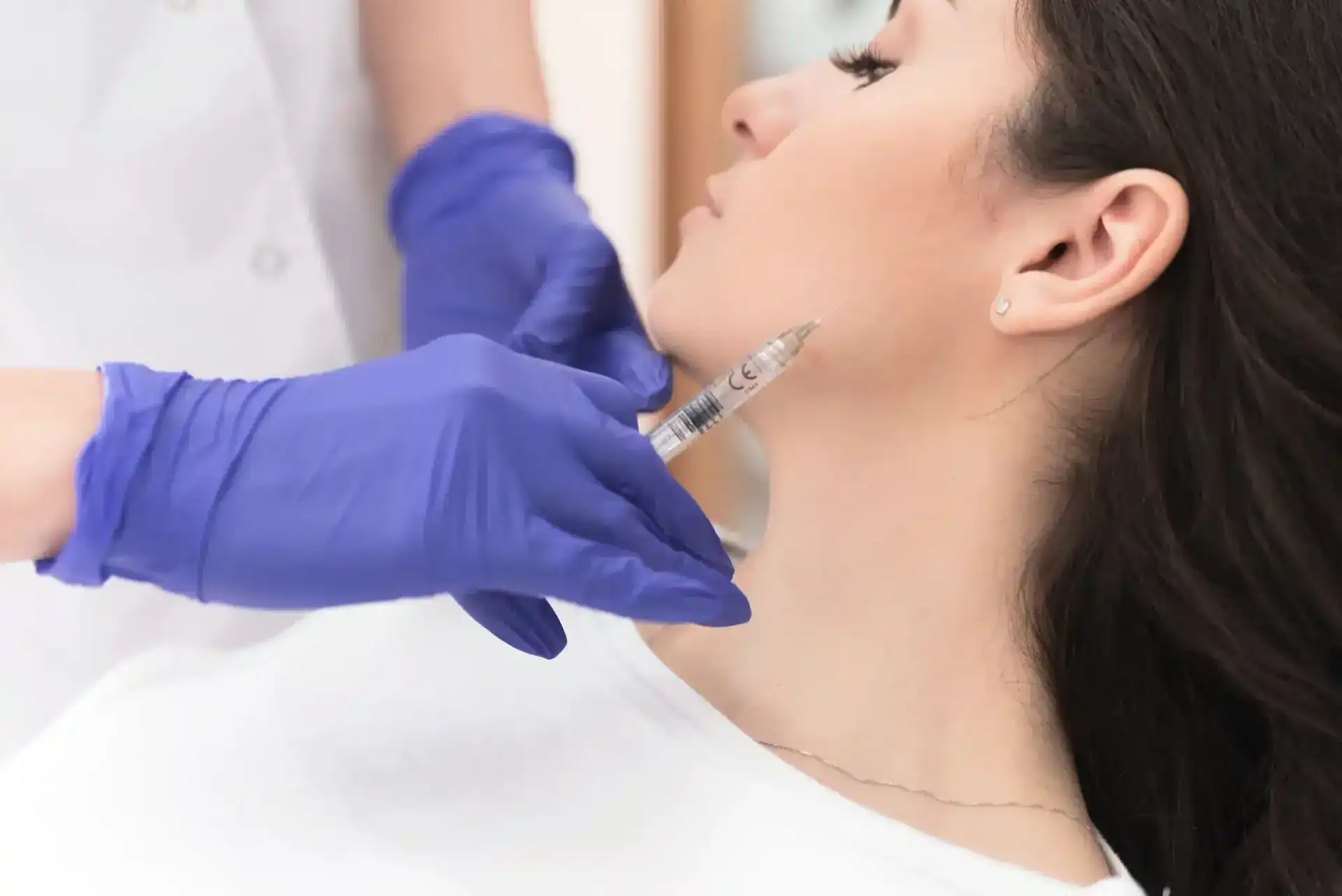
Treating Awake Bruxism with BOTOX®
David Fuller
Last Updated On: June 20, 2024
While many may consider bruxism to be a disease, it is a risk factor for other pathological conditions. The rise in parafunctional teeth clenching has prompted clinicians worldwide to explore its complexities and consequences to deliver improved patient care.
It wasn’t until 2012 that a gathering of bruxism experts catalyzed the emergence of a new definition for sleep and awake bruxism.1This definition specifically addresses the masseter muscles’ activity during sleep (SB) and wakefulness (AB).
Per definition, bruxism is a parafunctional activity defined by the repetitive or sustained non-functional contact of teeth through clenching, grinding, or bracing with or without lateral movement of the mandible. Interestingly, in healthy people, it is often seen as an activity of the masticatory muscles associated with muscular contraction disorders rather than a movement disorder.1
What does Awake Bruxism Mean?
Awake bruxism is identified by recurring or continuous tooth contact, sustained tension in the masticatory muscles, and purposeful jaw movements—sideways or forward—while awake.2 Conversely, sleep bruxism is all about the rhythmic or non-rhythmic activation of the masseter and temporal muscles throughout sleep.
Apart from physical causes, patients with awake bruxism are often linked to temporomandibular joint disorders, psychological disorders, medication (antidepressants and antipsychotics), and substance use.5 They are also more prone to jaw pain and movement limitations compared to those with sleep bruxism.
When you look at the statistics, it may seem that awake bruxism is more prevalent (22%-31%) than its nocturnal counterpart (10%-13%). However, some clinicians believe otherwise. The number of patients reporting daytime bruxism can also be high due to them simply being awake and observant of their condition, unlike sleep bruxers.
Patients with awake bruxism may often present with a combination of oral and musculoskeletal symptoms:
- Audible teeth grinding or clenching.
- Elevated tooth sensitivity.
- Teeth that are flattened, fractured, chipped, or loose.
- Soreness in the face, neck, or jaw.
- Tight jaw muscles.
Typically, patients often self-report awake bruxism, as there are no reliable, objective methods to quantify it. However, the American Academy of Sleep Medicine has established clinical and polysomnography (PSG) criteria3 for precisely diagnosing sleep bruxism.
What Causes Bruxism?
Identifying a single cause of bruxism requires extensive research and time. However, awake and sleep bruxism can result from the interplay of various factors,4 including those listed below:
- Central Nervous System (CNS) Dysfunction: elevated stress hormones and neurotransmitters (e.g., dopamine, serotonin) and impaired motor control.
- Psychological and Behavioral Factors: stress and anxiety, perfectionism, competitiveness, and anxiety sensitivity.
- Peripheral Influences: temporomandibular joint (TMJ) disorders, misaligned bites (malocclusion), and missing teeth.
- Genetic Predispositions: family genetic factors can influence susceptibility.
The Impact of Awake Bruxism on Quality of Life
Awake bruxism poses challenges to oral health and overall well-being. Dental issues, including tooth wear, fractures, and damage to dental restorations, are common consequences. Moreover, individuals with awake bruxism often experience jaw pain, temporomandibular joint (TMJ) dysfunction,5 and limitations in jaw movement, contributing to discomfort and functional impairment. The condition further extends its influence to the masticatory muscles, causing muscle fatigue and discomfort, thereby diminishing oral health-related quality of life.
Traditional Treatment Options for Awake Bruxism
Several methods have been known and employed in the management of bruxism, although the search for a definitive cure is on. The following approaches7 have been known to alleviate the impact of bruxism in varying degrees:
- Occlusal Adjustments and Equilibration Therapy
- Sleep Hygiene
- Psychotherapy
- Physical therapy and therapeutic exercises
- Acupuncture
- Relaxation training
- Electrotherapy
- Massage
- Biofeedback
- Contingent electrical stimulation (CES)
- Pharmacological aids
- BOTOX®
While these devices can provide some relief, they do not address the underlying cause of the problem. In addition, they can be uncomfortable to wear and may not be suitable for all patients.
Botulinum Toxin for Bruxism Treatment
BOTOX®, more accurately known as onabotulinumtoxinA, is a purified protein obtained from the bacterium Clostridium botulinum. It has become a widely used and highly effective tool for treating various diseases affecting the oro-facial complex.
BOTOX® targets and inhibits neuromuscular transmission in the following fashion:
- Binding: BOTOX® attaches to specific receptors on the presynaptic nerve terminals at the neuromuscular junction.
- Internalization: The toxin is then taken up into the nerve terminal through endocytosis.
- Cleavage: Once inside the nerve terminal, BOTOX® cleaves SNAP-25, a vital protein that is required to release acetylcholine (ACh), the neurotransmitter responsible for muscle contraction.
- ACh Blockade: Without functional SNAP-25, ACh vesicles cannot fuse with the presynaptic membrane, preventing ACh release.
- Muscle Relaxation: Consequently, the muscle does not receive the signal to contract, leading to localized muscle relaxation.
This targeted inhibition of ACh release is temporary and typically lasts 3-6 months, as the nerve terminal gradually produces new SNAP-25 proteins and regains its function.
Numerous studies have shown BOTOX®’s effectiveness8 in reducing awake bruxism symptoms and jaw pain and improving oral health.
Patient Assessment and Selection
Careful patient selection and assessment are the mainstays for obtaining favorable results. Suitable candidates for BOTOX® treatment typically include individuals diagnosed with severe bruxism who have not responded to conventional therapies, such as mouthguards or behavioral interventions. Patients with overactive masseter and temporalis muscles, experiencing symptoms like jaw pain, headaches, and teeth grinding, may also be candidates for BOTOX® injections.
Evaluating the patient’s medical history, potential allergies or sensitivities to botulinum toxin, and treatment expectations is essential. Furthermore, It is crucial to inform patients about the temporary nature of BOTOX® treatment, possible side effects, and the need for recurring injections.
Collaborating closely with patients to understand their objectives and anticipated outcomes is vital in determining the appropriateness of BOTOX® treatment for their bruxism.
Clinicians prefer to employ a combination of these tools to diagnose bruxism accurately:
| Assessment Method | Details |
| Clinical Examination | Visual teeth inspection for wear and tear. Palpation of jaw muscles for tenderness or tightness. Auscultation of the temporomandibular joint (TMJ) for clicking or popping sounds. |
| Questionnaires | Bruxism Activity Inventory (BAI) Oral Habits Assessment Stress and Anxiety Scales |
| Instrumental Tests | Electromyography (EMG) to measure jaw muscle activity. Polysomnography (sleep study) for definitive diagnosis(more beneficial for SB) |
| Smartphone Applications | Usage of bruxism-monitoring apps for continuous assessment and data tracking. |
| Additional Considerations | Patient’s response to other bruxism treatments. Presence of severe symptoms or complications. Patient’s overall health and medical history. |
How is BOTOX® Administered?
Precision is paramount in the latest developments in bruxism treatment as experts emphasize targeted botulinum toxin injections into the triangle center of the masseter muscle. BOTOX® injections are administered into the masseter and temporalis muscles with precise dosages and injection sites. The recommended dosages include 25–30 BTX units per side for the masseter muscle and 15–20 BTX units per side for the temporalis muscle.
The spread of toxins from injection points extends approximately 2.5-3 cm. Therefore, injections should be given at safe distances from areas rich in nerves. This strategic approach reduces muscle mass by approximately 30% and effectively addresses muscle hypertrophy.
Patients may experience minimal side effects, such as transient difficulty in mastication, which naturally resolves after a week. Additionally, therapeutic effects on the masseter muscles are typically noticeable after 3 weeks. Optimal treatment effectiveness requires avoiding both excessive and insufficient doses.
Bruxism and Aesthetic Concerns6
As facial aging is influenced by intrinsic and extrinsic factors, it’s essential to recognize the role of bruxism and unhealthy oral habits as external factors that can be modified.
Over time, chronic bruxism can enlarge the masseter and temporalis muscles, resulting in a more angular, masculine facial structure. It can accelerate the ageing process of the lower face, with parafunctional habits and muscle hyperkinesis contributing to premature facial aging changes.
Many patients seek cosmetic interventions like dermal fillers and dental veneers in want of a slimmer and softer facial appearance. This is where a comprehensive approach incorporating botulinum toxin for bruxism treatment along with fillers and lasers is effective in achieving optimal rejuvenation of the aging face.
Conclusion
To effectively manage bruxism, it’s essential to be aware of the condition and take steps to avoid unwanted teeth contact. A helpful way to remember this is to “keep your lips together and teeth apart.” Awareness, understanding of the context, and providing education can enable patients to manage their awake bruxism and promote overall well-being effectively.
BOTOX® for bruxism is emerging as a promising solution, with studies demonstrating its efficacy in reducing the impact of awake bruxism on dental health. Relaxing the muscles offers targeted relief and promotes better oral health.
FAQs
● How do you treat awake bruxism?
Awake bruxism can be treated with BOTOX® injections, oral appliances, behavioral therapies (biofeedback), and medications. These options can help alleviate the symptoms of bruxism and improve the patient’s quality of life.
● What are the downsides of BOTOX® for bruxism?
While BOTOX® shows promise in bruxism treatment, there are some potential downsides, including temporary muscle weakness and the need for repeated injections.
- Transient discomfort,
- Inflammation, and bruising at the injection site.
- Eyelid ptosis,
- Misaligned eyebrows,
- Headaches,
- Flu-like symptoms.
In addition, uncommon side effects may manifest, including an asymmetrical smile, drooling, excessive tearing, or dryness. In rare instances, BOTOX® diffusion beyond the injection site might induce unexpected side effects.
● How long does BOTOX® last for bruxism?
The effectiveness of BOTOX® usually lasts for three to four months. The onset of action happens within 1 to 3 days after injection. It may take up to two weeks to fully see the effects. Regular follow-up appointments are important to maintain ongoing relief from symptoms of awake bruxism.
● Does BOTOX® for bruxism change face shape?
BOTOX® for bruxism can cause an apparent slimming of the jawline, but it does not change the face shape permanently. The effect of BOTOX® on the face is primarily localized to the masseter muscle, which is responsible for chewing. However, individual responses may vary.
References
- Vlăduțu DE, Ionescu M, Mercuț R, Noveri L, Lăzărescu G, Popescu SM, Scrieciu M, Manolea HO, Iacov Crăițoiu MM, Ionescu AG, et al. Ecological Momentary Assessment of Masseter Muscle Activity in Patients with Bruxism. International Journal of Environmental Research and Public Health. 2023; 20(1):581. https://doi.org/10.3390/ijerph20010581
- Vieira MdA, Oliveira-Souza AISd, Hahn G, Bähr L, Armijo-Olivo S, Ferreira APdL. Effectiveness of Biofeedback in Individuals with Awake Bruxism Compared to Other Types of Treatment: A Systematic Review. International Journal of Environmental Research and Public Health. 2023; 20(2):1558. https://doi.org/10.3390/ijerph20021558
- Guaita M, Högl B. Current Treatments of Bruxism. Curr Treat Options Neurol. 2016 Feb;18(2):10. doi: 10.1007/s11940-016-0396-3. PMID: 26897026; PMCID: PMC4761372.
- L T Thayer M, Ali R. The dental demolition derby: bruxism and its impact – part 1: background. Br Dent J. 2022 Apr;232(8):515-521. doi: 10.1038/s41415-022-4143-8. Epub 2022 Apr 22. PMID: 35459823; PMCID: PMC9033581.
- Chemelo VDS, Né YGS, Frazão DR, de Souza-Rodrigues RD, Fagundes NCF, Magno MB, da Silva CMT, Maia LC, Lima RR. Is There Association Between Stress and Bruxism? A Systematic Review and Meta-Analysis. Front Neurol. 2020 Dec 7;11:590779. doi: 10.3389/fneur.2020.590779. PMID: 33424744; PMCID: PMC7793806.
- Aguilera SB, Brown L, Perico VA. Aesthetic Treatment of Bruxism. J Clin Aesthet Dermatol. 2017 May;10(5):49-55. Epub 2017 May 1. PMID: 28670358; PMCID: PMC5479477.
- Lal SJ, Weber, DDS KK. Bruxism Management. [Updated 2022 Oct 12]. In: StatPearls [Internet]. Treasure Island (FL): StatPearls Publishing; 2023 Jan-. Available from: https://www.ncbi.nlm.nih.gov/books/NBK482466/
- Fernández-Núñez T, Amghar-Maach S, Gay-Escoda C. Efficacy of botulinum toxin in the treatment of bruxism: Systematic review. Med Oral Patol Oral Cir Bucal. 2019 Jul 1;24(4):e416-e424. doi: 10.4317/medoral.22923. PMID: 31246937; PMCID: PMC6667018.
Products
Cart
Log In
Newsletter
Subscribe for exclusive offers and updates on new arrivals
Share feedback at:
Working Hours
MON - SUN 9AM to 6PM EST
The Most Popular Brands
Med Supply Solutions
Support
Secure checkout is guaranteed with full adherence to PCI DSS payment standards.
Products listed here are guaranteed authentic and manufacturer-sourced.
Pay easily with trusted providers


Copyright 2025. Med Supply Solutions